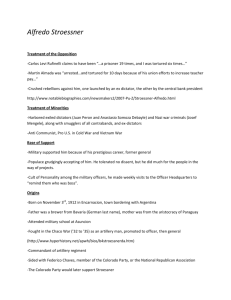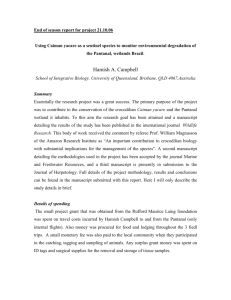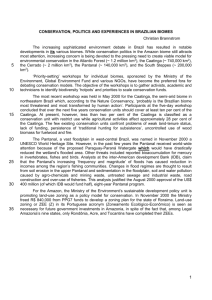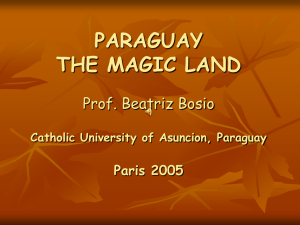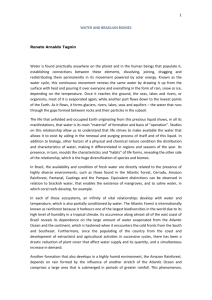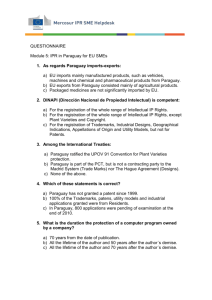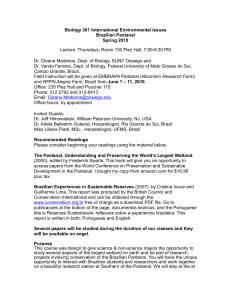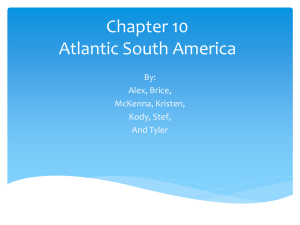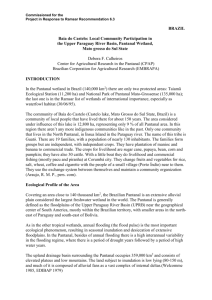executive_summary
advertisement
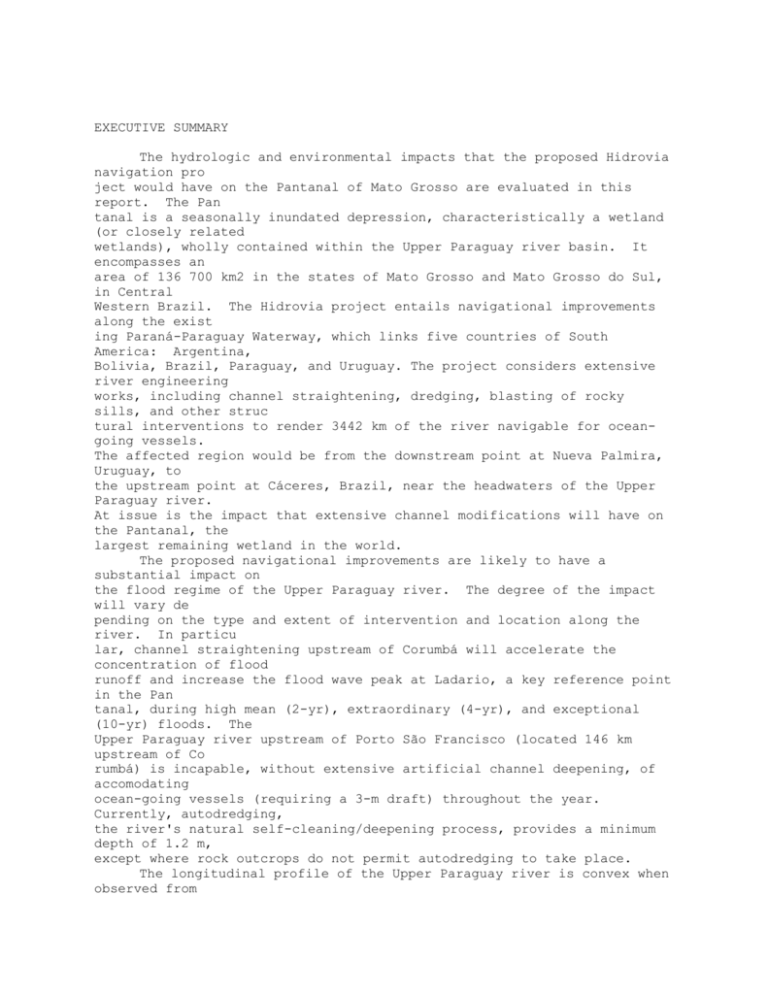
EXECUTIVE SUMMARY The hydrologic and environmental impacts that the proposed Hidrovia navigation pro ject would have on the Pantanal of Mato Grosso are evaluated in this report. The Pan tanal is a seasonally inundated depression, characteristically a wetland (or closely related wetlands), wholly contained within the Upper Paraguay river basin. It encompasses an area of 136 700 km2 in the states of Mato Grosso and Mato Grosso do Sul, in Central Western Brazil. The Hidrovia project entails navigational improvements along the exist ing Paraná-Paraguay Waterway, which links five countries of South America: Argentina, Bolivia, Brazil, Paraguay, and Uruguay. The project considers extensive river engineering works, including channel straightening, dredging, blasting of rocky sills, and other struc tural interventions to render 3442 km of the river navigable for oceangoing vessels. The affected region would be from the downstream point at Nueva Palmira, Uruguay, to the upstream point at Cáceres, Brazil, near the headwaters of the Upper Paraguay river. At issue is the impact that extensive channel modifications will have on the Pantanal, the largest remaining wetland in the world. The proposed navigational improvements are likely to have a substantial impact on the flood regime of the Upper Paraguay river. The degree of the impact will vary de pending on the type and extent of intervention and location along the river. In particu lar, channel straightening upstream of Corumbá will accelerate the concentration of flood runoff and increase the flood wave peak at Ladario, a key reference point in the Pan tanal, during high mean (2-yr), extraordinary (4-yr), and exceptional (10-yr) floods. The Upper Paraguay river upstream of Porto São Francisco (located 146 km upstream of Co rumbá) is incapable, without extensive artificial channel deepening, of accomodating ocean-going vessels (requiring a 3-m draft) throughout the year. Currently, autodredging, the river's natural self-cleaning/deepening process, provides a minimum depth of 1.2 m, except where rock outcrops do not permit autodredging to take place. The longitudinal profile of the Upper Paraguay river is convex when observed from above, revealing the presence of substantial geologic controls. These controls operate in the form of rock outcrops on the banks or rocky sills in the middle of the channel. The Pantanal exists largely because of these geologic controls, which influence the regional flow patterns in at least three places: Amolar, Porto da Manga and Fecho dos Morros. The rocky sills act as natural dams; if they are removed, extensive areas of Pantanal will no longer be subject to seasonal flooding. Blasting rocky sills as a means of deepening the navigation channel will have an irreversible impact on the hydrology of the Upper Paraguay river. Furthermore, the removal of one rocky sill may lead to the appearance of another rocky sill which was previously submerged. This is a distinct possibility in the Upper Paraguay river, where rock outcrops have been documented to occur every 40 km on the average, and where the prevailing channel slopes are so mild (around 1-2 cm/km) that the backwater effect of a 0.5-m flow obstruction can be felt for about 400 km upstream. The acceleration of runoff concentration caused by navigational improvements will in tensify most annual floods, may reduce the recurrence interval of multiannual droughts, and may eventually lead to regional climatic changes in the direction of greater aridity. The Pantanal exists because its climatic/geologic/geomorphologic setting conditions it to retain water, sediment, and nutrients. Increases in flood magnitude will result in increased losses of sediment and nutrients. The annual flooding of extensive areas of Pantanal serves the dual purpose of effec tively controlling overgrazing while replenishing the soil with nutrients. In addition, the seasonal flood pulse is instrumental in maintaining the extensive grasslands, since com peting vegetation types, particularly the woody species, are not well adapted to extreme alternations of saturation and desiccation. Changes in hydrologic regime resulting in increased intensity of floods and droughts will impair nutrient replenishment in the Pantanal and lead to decreases in biotic produc tivity. These changes will produce a succession from herbaceous to woody species, which will eventually change the dominant character of the Pantanal, from savanna woodlands to more mesic forests. The open grasslands will shrink, and the cattle raising industry will be negatively impacted. _ _ _
